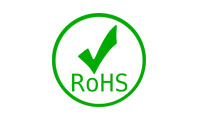The vast majority of people that do not have direct experience in construction are unlikely to consider the impacts of construction vibration. Those who have experience in the industry will be aware of the risks, and how noise and vibration in construction must be effectively managed and mitigated. Not only does excessive vibration pose a risk to construction workers, but it can have negative environmental impacts.
This is especially true if the construction project is taking place in a densely populated city with surrounding buildings and architecture. The good news is that there are companies, such as ourselves, that are creating products that make vibration mitigation easier. Today we are diving into construction vibration: asking what it is and why vibration management is key to worker and site safety.
What is Construction Vibration?
The construction industry relies on tools and equipment that produces vibrations, hence the term construction vibration. On the surface, exposure to machinery vibration does not sound particularly sinister. When you begin to unpack noise and vibration in construction however, you realise that vibration producing equipment that is not managed poses a risk to worker and site safety. But why is this? Continue below.
Why Does Noise and Vibration in Construction Need to Be Managed?
You only need to consider the existence of The Control of Vibration at Work Regulations 2005 to understand the importance of vibration mitigation in construction. Those in the construction sector are at high risk of vibration related health complications without adequate mitigation measures and equipment. Hand held vibrating tools are particularly tricky, as workers exposed to these without management can develop Hand-Arm Vibration Syndrome (HAVS). This is a debilitating illness that can cause pain in the hands and fingers, as well as dexterity issues.
The health and safety of on site workers is not the only thing to consider when exploring construction vibration. Contractors and site managers must comply with vibration control procedures to avoid damage to nearby structures during a construction project. Site managers will ensure vibration monitoring tools are both implemented and functional, and pre/ post construction crack inspections may be performed.
Construction Vibration Mitigation Measures: An Overview
Construction vibration mitigation measures vary hugely, as different equipment and tools produce vibrations. All cases of vibration management need to be implemented on an individual basis, and site managers will use different mitigation methods across sites. Some key examples include anti vibration tools, anti vibration PPE, following vibration protocol, education and awareness as well as the inclusion and integration of items such as anti vibration mounts for machinery and equipment. We have unpacked these below.
-
Anti Vibration Mounts
Mounts and bushes, such as the ones sold by us, are an integral part of the production process for hand held tools, for example. Having functional mounts and bushes can help to ensure equipment is working correctly and worker safety is prioritised. Hand held tools do not only benefit from these products however. Generators and other vibration producing equipment require anti vibration mounts or even levelling feet for noise and vibration mitigation. Whether drilling or excavating, hand held tools can cause adverse health effects if not properly managed.
-
Awareness and Site Safety Measures
Mitigating the adverse effects of noise and vibration in construction can also be completed by ensuring employees follow safety protocols, as well as raising awareness of conditions such as HAVS. Site safety measures include: avoiding faulty tools, taking regular breaks when using high risk equipment, wearing PPE (anti vibration gloves) where appropriate as well as warm sufficient clothing and not ignoring the signs of vibration related health problems.
-
PPE (Anti Vibration Gloves)
Specialist PPE can be awarded to site workers that can help manage any unwanted side effects from vibration producing equipment. One example is anti vibration gloves, which work to minimise and absorb the tremors produced by hand held tools and machinery. PPE like this can reduce the likelihood of developing HAVS, and should be used in conjunction with the other mitigation measures spoken of.
AV Industrial: Supporting Construction Vibration Management
Our team hope you enjoyed the article exploring noise and vibration in construction and some of the most popular construction vibration mitigation measures. As stated, we at AV Industrial stock a range of products that help to manage noise and vibration that is created from a range of tools and equipment. We work across a wide range of industries delivering our products, and have experience supporting the construction industry. If you would like to speak to one of our advisors about our product range or how we can help to minimise construction vibration, contact us today.




